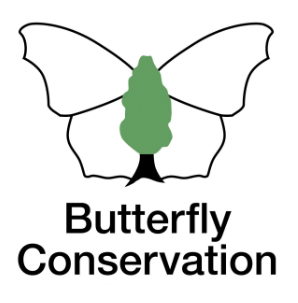Brown Argus
Brown Hairstreak
Chalkhill Blue
Clouded Yellow
Comma
Common Blue
Dark Green Fritillary
Dingy Skipper
Essex Skipper
Gatekeeper
Green Hairstreak
Green-veined White
Grizzled Skipper
Holly Blue
Large Skipper
Large White
Marbled White
Meadow Brown
Orange-tip
Painted Lady
Peacock
Purple Emperor
Purple Hairstreak
Red Admiral
Ringlet
Silver-washed Fritillary
Small Blue
Small Copper
Small Heath
Small Skipper
Small Tortoiseshell
Small White
Speckled Wood
Wall
White Admiral
White-letter Hairstreak
Extinct/rare immigrants
Purple Emperor
Apatura iris
General Distribution and Status
The Purple Emperor is found in central southern England between Wiltshire in the west, Sussex in the east and Northamptonshire in the north with a few scattered colonies elsewhere. It is one of our most beautiful and majestic butterflies attracting huge interest with many books and articles written on the butterfly's behaviour and ecology. Its elusiveness and habit of spending most of its time high in the tree canopy has undoubtedly meant that many colonies were and are still being overlooked. As a consequence, it is difficult to monitor populations and therefore determine trends in range and abundance. However, there is evidence that its range became more restricted in the 20th century with colonies lost in the west and east of the country, for example, in Kent. Since the 1980s, however, there has been a re-expansion and the butterfly has been re-discovered at its former haunts (Asher et al., 2001), apparently more so since 2005 (Fox et al.). The reason might owe to increased recording effort and a greater understanding of the insect's ecology among the butterfly fraternity. In Hertfordshire and Middlesex, the last decade or two has seen a large expansion starting from the south with sightings recently reported from the north. Andrew Middleton and Elizabeth Goodyear undertook extensive research on the butterfly and they themselves discovered many new colonies. Their account of the status of the Purple Emperor in Hertfordshire published in the Transactions of the Hertfordshire Natural History Society journal (see below in 'References') is a 'must read'!
| United Kingdom | Herts & Middx | |||
| Distribution | 1976-2019 | +58% | 1980-2015 | +6700% |
| Average 10-year trend | +18% | 2006-2015 | +42% | |
| 2024 since 2015-19 | -40% | |||
| Abundance | 1976-2024 | +125% | 1980-2015 | n/a |
| 2015-2024 | +25% | 2006-2015 | 0% | |
| 2023-2024 | -11% | 2024 since 2015-19 | +300% | |
UK distribution map
UKBMS Species summary
Habitat Requirements
This species inhabits large deciduous woodlands although they may occur in small woods if they are part of a larger woodland complex, where sallows are present.
Larval Foodplants
Goat Willow Salix caprea. Other members of the sallow family are sometimes taken, like Crack Willow S. fragilis and Grey Willow S. cinerea.
Adult Food Sources
Ground/mud/road surface (19), dung (18), honeydew (10), rotten flesh (10), tree sap (10), Buddleia Buddleja davidii (3), Sweet Chestnut Castanea sativa (1).
Historical Records
Gibbs (1902) includes a report by Stephens in July 1833 at Hertford but no other definitive records noted until about the turn of the century. In his 1903 report (Gibbs 1904), he writes 'Mr A. H. Foster saw, but unable to catch, a specimen in 1899 or 1900, settled on some dung in the middle of the road which leads by the side of Hitch Wood towards Whitwell. Mr Foster believes it is present in Hitch Wood, Knebworth Great Woods, Mardley Heath Woods and Welwyn Tunnel Woods. The late Mr Frank Latchmore also tried to catch specimens on the road by Hitch Wood with his hat'. Evidence seems to suggest that the butterfly became extinct in the county until 1950 when Roger Ferry found a pupa at Knebworth Woods (Watery Grove) (Bell) although it was reported 'seen in living memory' at St. John's Wood near Walkern, prior to the 1940s, by Birdsall. Roger Ferry commented that Watery Grove was a site for the Purple Emperor and Jonathan Crozier found a specimen in Astonbury Wood in 1978 (Goodyear & Middleton).
Local Distribution and Abundance
The first record in the 1995-2023 survey came in 2010 although it is possible that the Purple Emperor was in the Knebworth Woods area earlier during the survey period for the reasons cited above. On the other hand, the butterfly might have just (re-)colonised the area as part of an ongoing expansion. Regular sightings near Rusling End and at Watery Grove since the beginning of the decade, suggest that at least one colony is surviving in this part of the county. Being a mobile species, it can be seen well away from its breeding grounds, for example, at Weston and Walkern as indicated on the map. In 2018, one was seen at Shephall on 27 June. The meadow at Norton Green Common is one of the best spots to find the butterfly and the open area outside Pigeonswick Cottage is also worth investigating. In 2017, since the new public footpath was established around the eastern side of Knebworth Park, I found some specimens on the tree-tops along the woodland edge, so an area worth exploring further. Following Don Gregory's sighting on 18 July 2021 on the northern edge of Whomerley Wood (first ever reported from the site) I found one at the same spot on 21 July. A female was feeding on buddleia in a garden at Brookhill, Stevenage (TL22K) on 29 July 2022. Unfortunately, there were no reports of this species in 2023 but four reports of single individuals arrived in 2024, all in the south western part of the TL22 square. None of the transects in the TL22 decad yielded any records of this butterfly.

Life History
Earliest date: 26 June 2017 at Norton Green
Latest date: 12 August 2013 at Weston
Only one
generation a year is produced with emergence from the first week of July until early August. The peak of abundance is usually around the 10th of July.
Females will usually lay eggs singly on the upper surface of a sallow leaf in a sheltered spot. Hatched larvae soon enter hibernation attached to a
sallow twig. In the spring they turn green in colour and continue feeding on the sallow leaves before pupating beneath a leaf.
Behaviour/Observation notes
Both sexes spend most of their time in the tree canopy. Males congregate on 'master' trees, usually of oak, at a high point in the landscape from mid morning and establish territories, often reaching a peak of activity at around 1 pm when the sun is at its highest. The territories will often be found on the edges of woodland and sheltered from the prevailing wind so the northern edge of a suitable wood will commonly be selected. Females will lay eggs away from the sunshine, most likely between around noon and 2 pm. To search for females exhibiting such behaviour in sallow bushes in known localities provides the best chance for finding them close-up. Males, in particular, will sometimes descend to the ground early in the day, to take nutrients from animal droppings and even shrimp paste! Some interesting behaviour was observed at Hatfield Forest on 21 June 2017 when two males were sipping 'moisture' about a foot above ground, one on a post and the other on a pine tree, in dry and humid conditions (photos on the right). It was suggested that the 'moisture' could be dog urine. When engaged in such activity the butterfly is very approachable so good opportunities for taking close-up photographs are possible.
Variations/Aberrations
Variations are rare but in large populations like at Fermyn Woods in Northamptonshire, they are not uncommon. One to look out for is in the reduced amount
of white on the uppersides. Completely black wings are extremely rare (ab. iole) but those with white markings only towards the apical area are
sometimes encountered (ab. semi-iole or ab. iolata) (Eeles).
Find out more on the UK Butterflies website
References
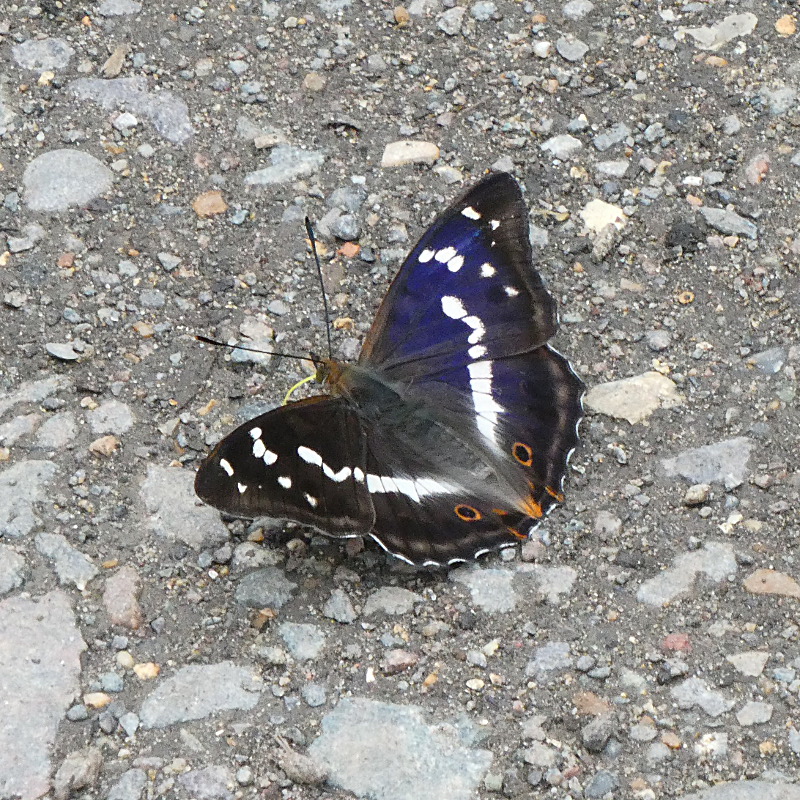
Norton Green Common 13 Jul 2021 (m)
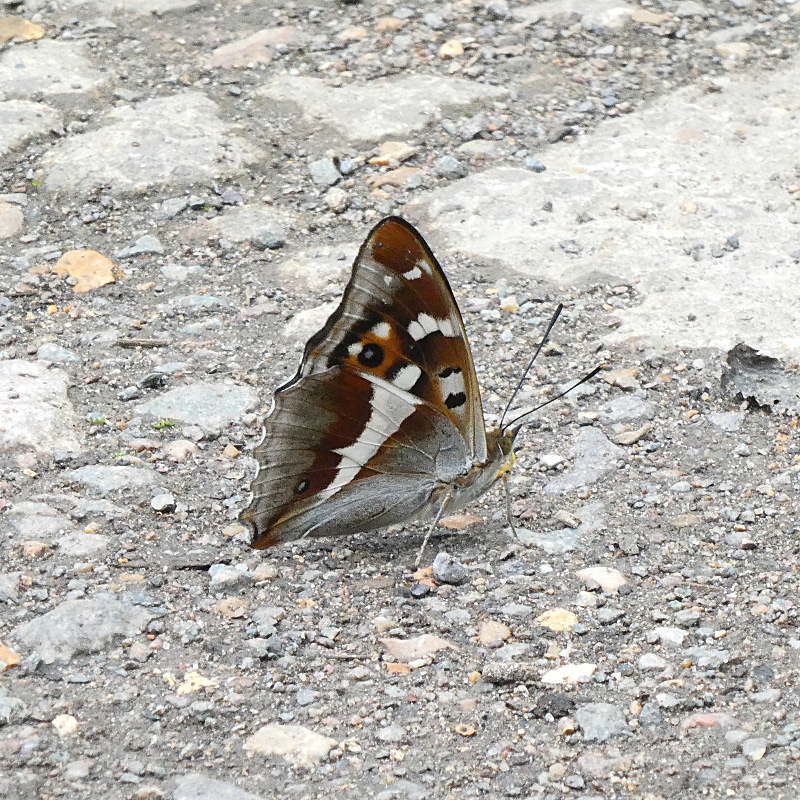
Norton Green Common 13 Jul 2021 (m)
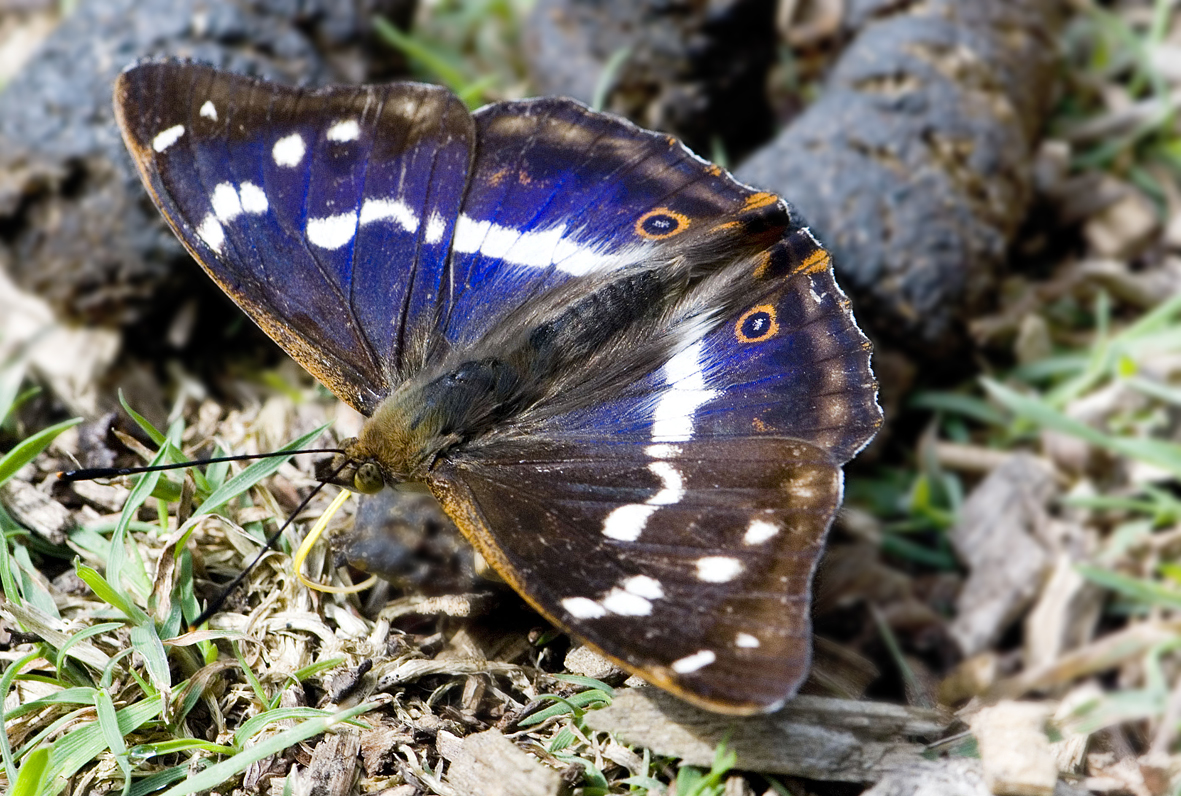
Broxbourne Wood 9 Jul 2009 (m) © Bob Clift
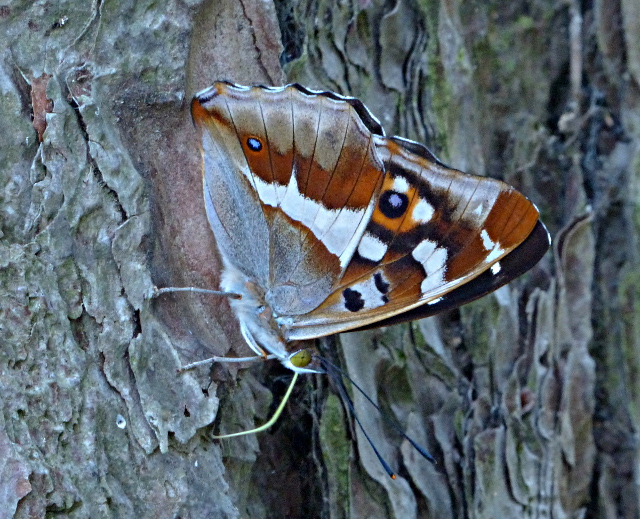
Hatfield Forest 21 Jun 2017 (m)
